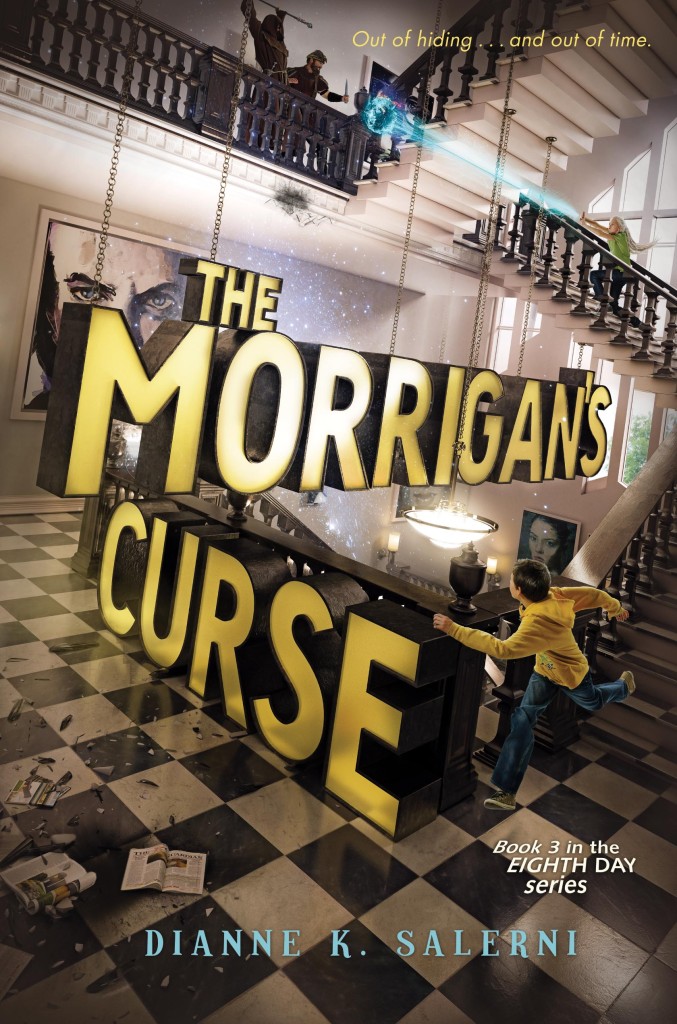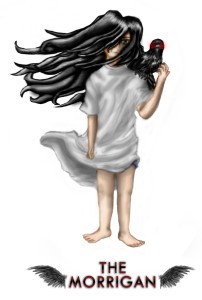 I had a lot of fun researching this book. A LOT of fun. And since I wrote the first draft all the way back in 2014, I’ve been sitting on all this cool stuff for a long time. With the book finally releasing next week, I’d like to talk about the myths and legends that produced some of the characters – and magical objects – in The Morrigan’s Curse.
I had a lot of fun researching this book. A LOT of fun. And since I wrote the first draft all the way back in 2014, I’ve been sitting on all this cool stuff for a long time. With the book finally releasing next week, I’d like to talk about the myths and legends that produced some of the characters – and magical objects – in The Morrigan’s Curse.
As with the first two books, I drew on Arthurian legends for my Transitioner characters. In The Morrigan’s Curse you’ll meet Transitioner lords Calvin Bedivere and Ash Pellinore. The Sir Bedivere of legend had only one hand, so I assigned my Bedivere “the hand of power” as his family talent. Sir Pellinore was known best for his pursuit of a great Beast. Therefore, I gave Ash Pellinore … no, wait. I’m going to keep that one a secret. It’s worth it. You’ll see.
Because some of the major characters in Morrigan are Kin – loosely based on the Tuatha de Danann – I also had the opportunity to delve into Celtic mythology. Each Kin character is linked to some god or goddess out of Celtic lore: Corra is an oracle, Aeron is the god of war and strife, Ratis is the god of boundaries and fortification.
 Lloyd Alexander drew on this same mythology in his Prydain Chronicles, and I found myself needing to use some of the same names: Llyr, Mathonwy, Arawn. I did my best to make my characters as different as possible from his, even using the alternate spelling of Arawen so as not to draw a parallel with Alexander’s Death-Lord, Arawn.
Lloyd Alexander drew on this same mythology in his Prydain Chronicles, and I found myself needing to use some of the same names: Llyr, Mathonwy, Arawn. I did my best to make my characters as different as possible from his, even using the alternate spelling of Arawen so as not to draw a parallel with Alexander’s Death-Lord, Arawn.
One of the best and most fun people to write about was the titular character, The Morrigan – a three-in-one deity who embodies chaos and destruction. She appears as either an old crone, a middle-aged woman, or a young girl (named by me as Girl of Crows). When I first stumbled across the Morrigan in my preliminary research, I knew at once that she needed a place in my third book. And when I was hit by THE IDEA, THE DELICIOUSLY SHOCKING IDEA about how to use the Morrigan, I had to go back into the second book, The Inquisitor’s Mark, and revise major sections to set up for her arrival.
 Finally, what’s a fantasy story without a few magic items? Especially ones that might be trickier than they first appear! Here I called upon the Treasures of the Tuatha de Danaan: The Cauldron of Dagda, The Spear of Lugh, the Sword of Nuadu, and the Stone of Fal. In the legends, each one had a very specific magical use, but when I stumbled upon a website describing the symbolic purpose of each item … well, then I had the backbone of this story.
Finally, what’s a fantasy story without a few magic items? Especially ones that might be trickier than they first appear! Here I called upon the Treasures of the Tuatha de Danaan: The Cauldron of Dagda, The Spear of Lugh, the Sword of Nuadu, and the Stone of Fal. In the legends, each one had a very specific magical use, but when I stumbled upon a website describing the symbolic purpose of each item … well, then I had the backbone of this story.
I hope that readers will enjoy how I put this all together! One of the best compliments I received from my editor was, “I kept having to Google the names in your manuscript because I couldn’t tell what you were getting from legend and what you were making up!”
Isn’t that what we aspire to?
***
I KNOW readers will enjoy The Morrigan’s Curse!
I’ve always wanted to research Celtic mythology. And I loved Lloyd Alexander’s series.
That means you made it seem real to her.
Next week? Awesome! I’ll plug it Monday for you.
Thanks, Alex! That would be wonderful!!!
Hi Dianne – it all sounds so intriguing … I don’t know Lloyd Alexander’s work (being non-American, I assume!) .. but just checked his info out. So now I’ll learn more about Celtic mythology. That’s great I see Alex is into promoting you … and well done – cheers Hilary
I love when myth is woven into stories–either blatantly or subtlety. It’s just cool.
Ahhhhh! Can’t wait 🙂
I’m dying to read this book! How cool that you stumped your editor with what was legend and what was your own imagination.
I love all mythology. It’s so interesting and really makes researching fun.
I loved your editor’s comment. That was truly a compliment.
Cool! It’s always a good sign when you get an idea so brilliant it needs to be set up right away. This sounds like it’s going to be one whopping good book.
How neat! And I love the three in one thing–very interesting. No wonder you had so much fun writing this one.
Have I told you in the last 15 minutes how much I love your covers?! So fun! And I’m in awe of how many big publishers you’ve worked with. You’re my new idol!
I’ve always loved the Celtic symbols-simple yet powerful. 🙂
Anna from elements of emaginette
Wow, it’s amazing how much research you put into that book. Those Celtic legends are fascinating. I’m really intrigued to read the whole series now! So awesome how you went back to the second book to prepare The Morrigan’s entrance.
Have a wonderful rest of the week!
Lots of hugs to you,
Beate
Awesome! The kids are so stoked for this book and I’m excited to read it to them. Way to do your research and pull it all together! I think the best books also teach you something.
This sounds like an awesome book! I love the idea to use magical items. Great job with the research!
That really is a great comment from the editor. Good luck with the book 🙂
You’ve put so much research, heart and soul into all of your books, which makes it especially sweet that it’s paying off for you. (The harder you work, the “luckier” you get!) Can’t wait to read Book Three!
I can’t wait to read this! Celtic mythology is wonderful.
Research is the key to everything! I’m so glad you enjoyed the fascinating things you found when looking for info and inspiration, and super-duper congrats on the new book!!!! 🙂
Awesome. ^_^ There is some amazing stuff out there in myth and legend, and a lot of it isn’t all that well-known – I knew almost nothing about Celtic mythology until I read a series that delved into it a great deal. Fascinating stuff. Sounds like you’ve made good use of it, especially if you’re this excited about it. Bwa ha ha.
This is so cool! Looking forward to finishing this adventure. 🙂
Doing the research and working up the main plot is definitely the part of writing I love best. Getting the words down on paper – um, not so much. If I could spend all day researching and thinking up plot twists, and then pay someone else to write it down, I might have to consider it. 🙂
YAY, DIANNE!!!! I have been WAITING For this FOR SO LONG!!!!! I had hoped to review the ARC, but I will be one of the first to buy this!!! As you know I REALLY enjoyed the first two books and I am THRILLED to read the next!
As soon as I do, I will be more that happy to write a review for you!
ALL THE BEST!!!! AND CONGRATS!!!!!!!